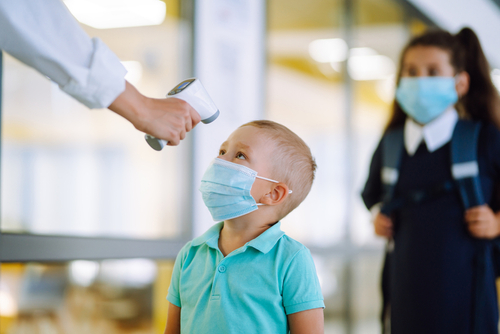When many people think of a school nurse, they imagine a person who hands out Band-Aids for boo-boos.
But school nurses do so much more. They are school leaders who address the physical, mental and emotional health needs of students.
As the COVID-19 pandemic played out, many school nurses took on even greater responsibilities. These include monitoring and evaluating staff and students for COVID-19 exposure and symptoms, contact tracing and educating students, staff and community partners on vaccine and prevention measures. School nurses are also developing initiatives to deal with the anticipated increase in mental health services that students, families and staff will need in the post-pandemic world.
And yet, the U.S. Department of Health and Human Services and the Centers for Disease Control and Prevention recommend that public elementary, middle and high schools aim to have one school nurse for every 750 students.
As a former school nurse and current nurse scientist and professor of nursing, I know that this one-size-fits-all model does not consider the full role and responsibilities of the school nurse.
What’s more, as far as I can tell, no published research or evidence supports this ratio. It’s been traced at least as far back as the early 1970s and the Education for All Handicapped Children Act of 1975, now known as the Individuals with Disabilities Education Act.
School nurses are a safety net for vulnerable kids
School nursing is a specialized practice that operates in environments very different from an acute care hospital setting. School nurses work alone, practice independently and are typically the sole health care provider in the building.
As part of our public health system, they play a critical role in disease surveillance, disaster preparedness, wellness and chronic disease prevention interventions, immunizations, mental health screening and asthma education.
And they are a safety net for society’s most vulnerable children. For example, if a student is experiencing food insecurity, the school nurse might coordinate with a community partner or school social worker to help the student and their family not go hungry.
Most school nurses will tell you they are unable to carry out many of these functions, often due to huge workloads or poor staffing.
I know from personal experience. From 2009 to 2014, I was the sole school nurse responsible for the health and safety of over 900 public elementary school children. This included special education classrooms for preschoolers and students with nonverbal autism. I now research how school health policies and practices effect the work environment of school nurses, and the challenges and barriers they face.
Research shows how a positive work environment for school nurses increases job satisfaction, reduces turnover and improves academic outcomes for students. A study of school nurses in Massachusetts schools demonstrated that for every dollar invested in school nursing, society would gain $2.20 as a result of kids’ better health and disease prevention.
No one-size-fits-all ratio
A school nurse’s workload depends on a number of significant variables. For example, how many students in the school have chronic illnesses and need medication administered? How many students attend the school? What ages are they? What is the average number of student visits to the health office each school day? Are students spread across multiple buildings? What level of experience and specialized skills does the school nurse have?
The number of students in a school who are dealing with poverty or other health equity issues – including access to quality education, safe housing and health care – also impacts and increases the workload for school nurses.
These evidence-based variables can be used to guide school administrators and school nurses on what constitutes safe staffing. Making sure school nurses have a safe, appropriate workload is critical to ensuring that students have their health needs met at school.
Parents who are concerned about their child’s health at school may want to find out how many students their child’s school nurse cares for. How many students does the school nurse see on a typical day? Is a school nurse in the building every day? Does the school nurse cover more than one building? What happens when there is an emergency, such as a child with a life-threatening allergic reaction? Where are the emergency care plans kept? Is there stock medication available such as epinephrine and albuterol for students with severe allergies or asthma?
I believe school nurses need more manageable workloads in order to provide the safe care needed for better student health and academic outcomes. This leads to better health not just in individuals but in communities that need it most.![]()
Beth Jameson, Assistant Professor of Nursing, Seton Hall University. This article is republished from The Conversation under a Creative Commons license. Read the original article.

